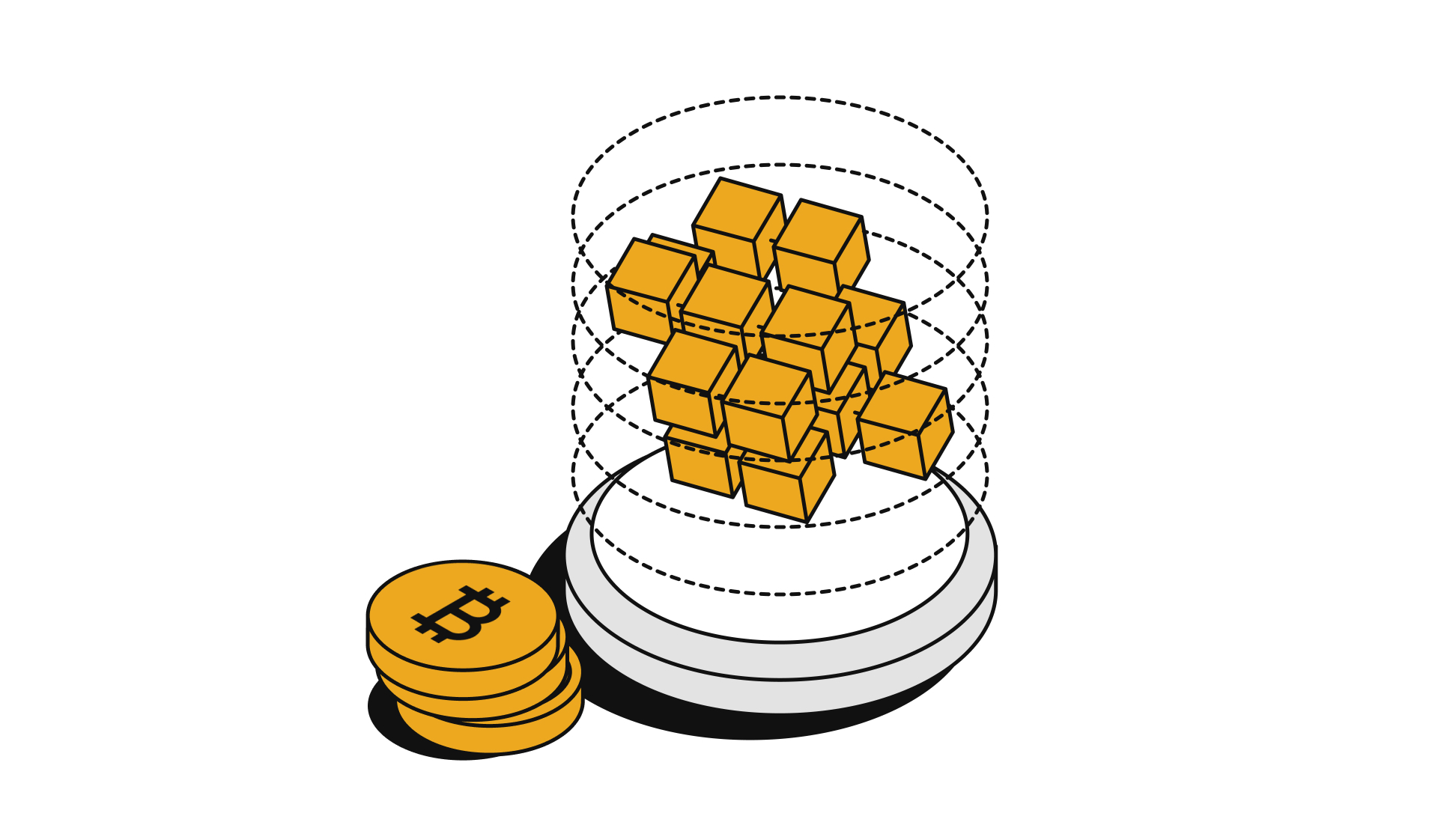Post-Halving Bitcoin: Hashrate Drops, Mining Financialization
.jpg)


Market Outlook
We’ve argued in previous research how fundamental a variable hashrate is to the safety and longevity of Bitcoin as a whole. The recent Halving helps demonstrate that the market understands the key role that miners play and that miners themselves can drastically impact the demand-supply dynamics of the Bitcoin market — through the amount of mined Bitcoin they sell on the open market and how that changes over time due to Halving events.
What is clear is that post-halving, the total amount of hashrate dedicated to mining on Bitcoin has reduced. This is likely due to certain miners having to reduce their operating costs or completely shutting down due to the reduction in their revenues from mining (Bitcoin’s mining reward fell from 12.5 BTC to 6.25 BTC), as well as technical issues with existing mining equipment such as the Antminer S17. There had been the chances that such miners may be able to survive the halving if Bitcoin’s price appreciated shortly after May 11, but in the absence of such a price appreciation Bitcoin’s hashrate has dropped by nearly 20% since the start of the month. The chart below shows exactly this.
More interestingly, is that the mining market has become increasingly financialized over the last year — with an influx of various options for investors to buy exposure to mining equipment or hedge their exposure to mining through futures contracts. This new era of mining financialization is likely to make it easier for miners to hedge against future Halvings or protect their bottom line against Bitcoin price volatility, whilst also allowing investors to speculate on changes in the mining market.
The chart below shows a metric that is called the “Hashprice”, it means the estimated amount of Bitcoin one can be expected to earn for a given amount of mining hashrate applied for the SHA256 algorithm used for Bitcoin, Bitcoin Cash, and Bitcoin SV. We look at the metric since the start of the year and we take the data from the mining contract provider Nicehash.
As we can see, a few weeks before the halving we saw a large spike in the Hashprice (as measured by Nicehash), the likely reason for this — given it was not caused by a Bitcoin appreciation — was that mining likely became noticeably less competitive, making it easier for a marginal miner to generate yield. This reduction in competition was likely caused by certain miners exiting the mining industry due to anticipations of Bitcoin’s Halving as well as in reaction to the halvings of Bitcoin Cash and Bitcoin SV.
We can expect the Hashprice to increase in the coming weeks slightly as the Bitcoin protocol adjusts again to the reduction in mining competition (Bitcoin adjusts to mining competition every two weeks through what is called a Difficulty adjustment). It’s essential that any investor or market participant in Bitcoin must pay attention to mining markets, as they act as one of the biggest drivers of selling pressure on the market. The combination of the Halving and the industry’s financialization is likely to be a driver of volatility in hashrate going forward and this fact has wider implications for the market.
The entire crypto asset market was down this week, partially driven by speculation around a 10-year old previously untouched amount of Bitcoin (50 BTC) which was transferred to two new addresses. The market reacted negatively to the movement due to fears that it could lead to a large and old holder of Bitcoin selling off. Such theories proved to be unsubstantiated but the market has not since recovered and will likely continue to be susceptible to such event-driven volatility as the market adjust to the post-halving regime — BTC (-8.66%), ETH (-4.46), XRP (-4.13%), BCH (-6.36%), and BSV (-7.43%).
DisruptNetwork Webinar with Sina Meier (Head of Business Development, Switzerland)
Last week, on Wednesday May 20th from 3:00 PM to 3:45 PM CET, hosted by DisruptNetwork — our Director of Business Development (Switzerland), Sina Meier shared her story on how she broke into the cryptoasset industry and how it would help to pave the way for getting more women to jump on the train going forward.
Watch the full video here and read her story here (6-minute read).
News - Early Bitcoin Miner Calls Craig Weight a Fraud Through "His Own" Addresses | CoinTelegraph
What Happened?
On May 21st, the infamous and controversially self-pronounced creator of Bitcoin, Craig Wright, submitted for the third time a list of Bitcoin addresses and blocks to the Florida court. Wright claims to own 1.1 million BTC that he mined in the early days of Bitcoin, which allegedly belong to a trust called Tulip Trust. This amount of Bitcoin must have been transferred to the Tulip Trust by January 2020 but results of previous investigations have proved him wrong on several occasions.
Yesterday, an early miner from 2009 signed a message disputing Craig Wright’s claims using the private keys of addresses belonging to a list that Craig Wright had claimed were under his ownership. The message accused Wright of being a liar and a fraud for his often-repeated attempts to take credit for the creation of Bitcoin and for the identity of its pseudonymous creator, Satoshi Nakomoto.
Why Does It Matter?
Openness and unforgeability are quintessential features for the integrity of the Bitcoin blockchain, especially in the midst of controversial investigations such as this one. Without these features it would have been easier for Craig Wright to falsify his claims of ownership of Bitcoin addresses and change their timestamp.
However, in such a case, this early Bitcoin miner showed the cryptoasset community one of the most important benefits of Bitcoin as a bearer digital asset — one can, to some extent, anonymously prove their ownership of Bitcoin by signing a cryptographic message without revealing their real identity. The openness of the Bitcoin Blockchain lets the community, and most importantly law enforcements in this case, promptly verify the accuracy of the information.
It’s been an 11-year run since people, whether they be law enforcement or members of Bitcoin community, have tried to unveil the real identity of Satoshi Nakomoto. But what occurred yesterday is a testament to the fact that we are still navigating in uncharted waters regarding the identity of Satoshi Nakamoto. And on the final note, this ordeal has only helped prove that Craig Wright is undeniably not the creator of Bitcoin.
Learn more here.
News - COVID-19 Worsens Pre-existing Financial Vulnerabilities | IMF
What Happened?
Yesterday, the International Monetary Fund (IMF) stated in a blog post that the current pandemic has worsened vulnerabilities that existed prior to the major lockdowns across the world economy. They predict banks will resort to fee income increases and cost cutting in order to maintain their bottom lines. In other words, charging fees on checking and investment accounts, laying off some of their employees, or closing branches to offset pressures on their P&L. On a similar note, the Financial Times reported the biggest restructuring by HBSC involving the potential sale of its US business and retail network in France.
Why Does It Matter?
In the case of charging fees on checking and investment accounts — this means that retail and institutional investors will earn negative interest rates, losing their cash holdings in the bank. Rising uncertainty in the job market due to the COVID-19’s economic consequences, has turned people into savers to protect themselves against rainy days through emergency funds. Losing cash holdings in traditional bank accounts would lead investors seeking for better places to store their cash, namely positive interest-bearing accounts.
Such a scenario will be important to watch especially for the cryptoasset industry, as there are services available such as USDC Rewards launched by Coinbase that lets investors earn interest, as high as 1.25% APY, on their USDC holdings. It is not implausible that we could witness capital flow to USD-pegged stablecoins from investors looking to build emergency funds without losing a portion of their wealth through fees charged by traditional banks. A safe and better user experience from service providers will be a must to ensure that in the case of a hack investors have insurance on their stablecoins. If our assumptions hold true, this investor migration will have a positive outlook on riskier cryptoassets such as Bitcoin in the future which will benefit from new money inflows into the space.
Learn more here.
Disclaimer
The information provided does not constitute a prospectus or other offering material and does not contain or constitute an offer to sell or a solicitation of any offer to buy securities in any jurisdiction. Some of the information published herein may contain forward-looking statements. Readers are cautioned that any such forward-looking statements are not guarantees of future performance and involve risks and uncertainties and that actual results may differ materially from those in the forward-looking statements as a result of various factors. The information contained herein may not be considered as economic, legal, tax or other advice and users are cautioned to base investment decisions or other decisions solely on the content hereof.

.jpg)














